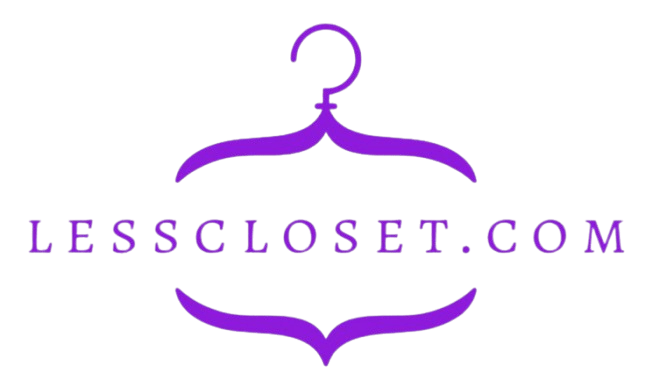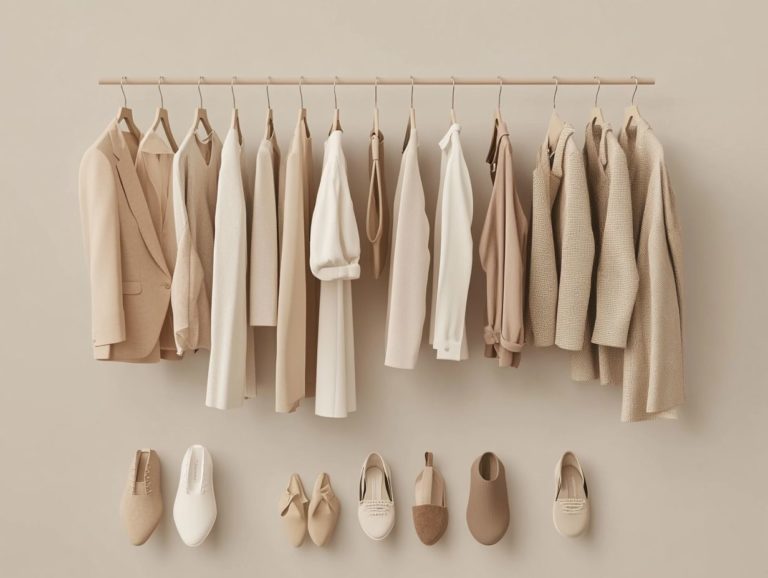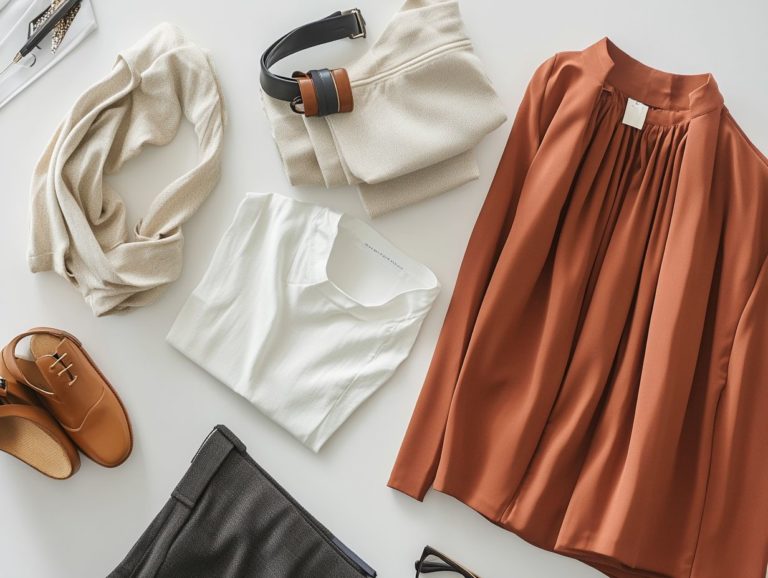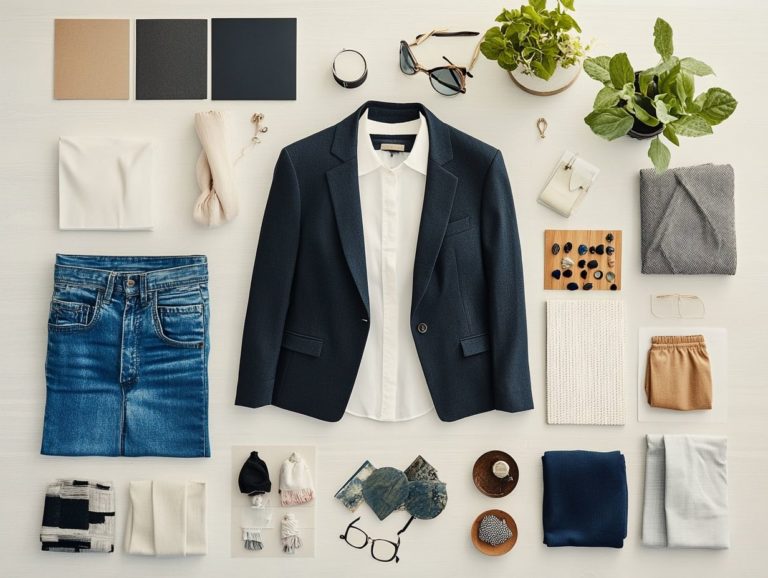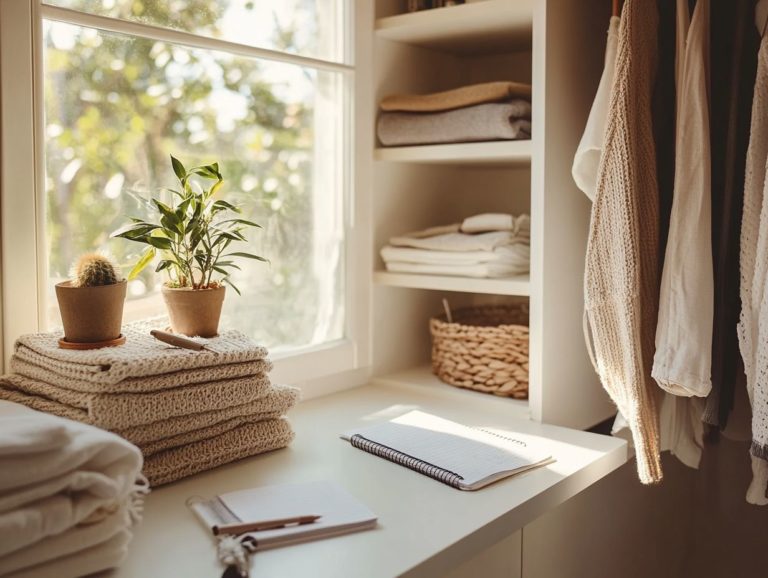Sustainable Fabrics for Your Capsule Wardrobe
Curious about simplifying your wardrobe while making a positive impact on the planet? A capsule wardrobe presents a smart, streamlined approach to sustainable fashion that emphasizes quality over quantity.
This guide delves into the concept of capsule wardrobes, highlights the significance of eco-friendly fabrics, and examines the environmental toll of fast fashion on garment workers. You ll learn to identify the best natural and synthetic materials, along with practical tips for incorporating sustainable choices into your wardrobe.
The goal is to help you create a chic and eco-friendly closet.
You will discover brands that match your values and fit your budget, including sustainable brands like Encircled and tica Denim. Jump in and transform your fashion game today!
Contents
- Key Takeaways:
- What is a Capsule Wardrobe?
- Why Choose Sustainable Fabrics?
- Types of Sustainable Fabrics
- How to Incorporate Sustainable Fabrics in Your Capsule Wardrobe
- Brands and Stores that Offer Sustainable Fabrics
- Frequently Asked Questions
- What are sustainable fabrics?
- What are some examples of sustainable fabrics that I can incorporate into my capsule wardrobe?
- Are sustainable fabrics more expensive than traditional materials?
- How do I know if a fabric is truly sustainable?
- Can I find sustainable fabrics in a variety of styles and designs?
- What are the benefits of having a capsule wardrobe made of sustainable fabrics?
Key Takeaways:
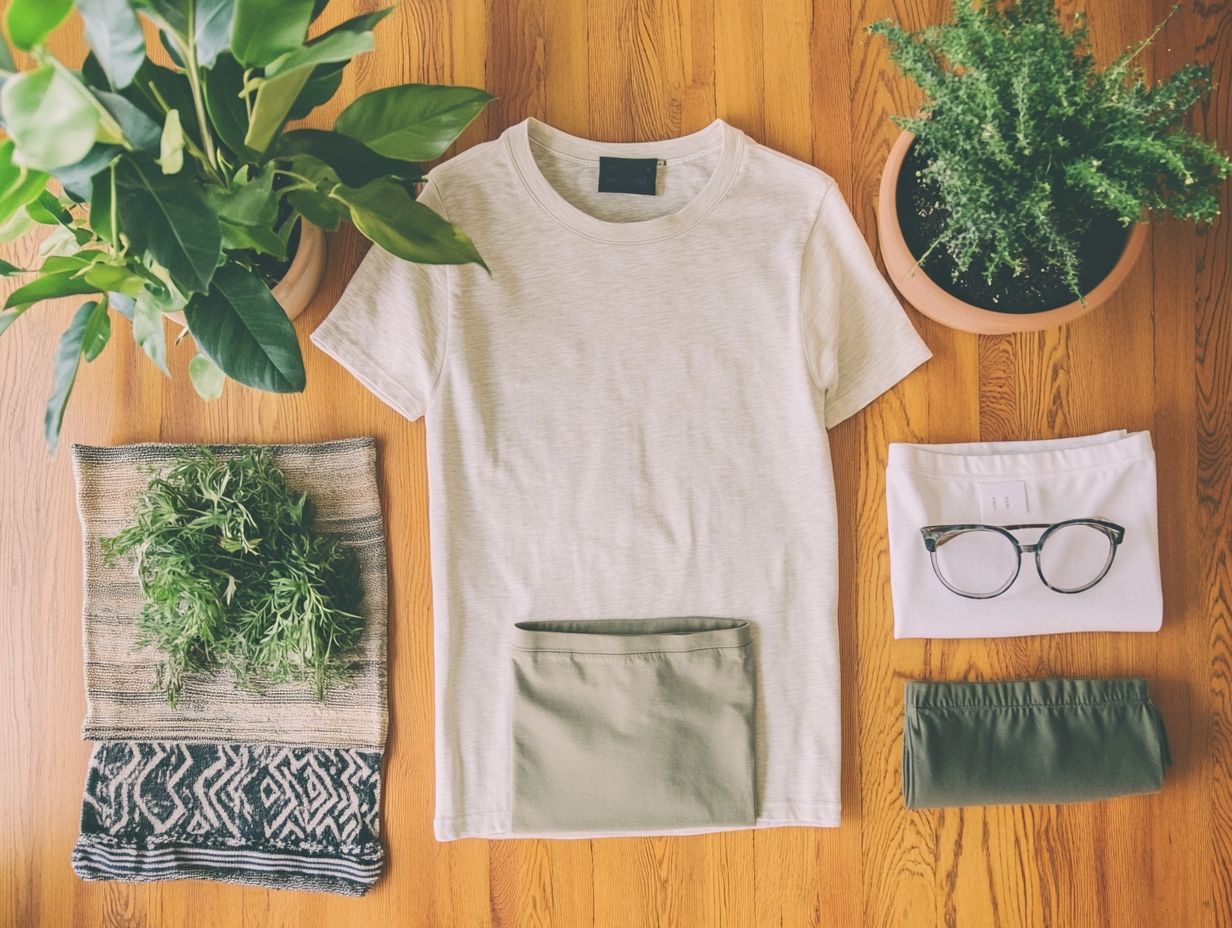
- Create a capsule wardrobe with versatile, timeless pieces that mix and match effortlessly.
- Choose sustainable fabrics to reduce your impact on the environment.
- Opt for natural fabrics like organic cotton and linen for durable, eco-friendly clothing.
What is a Capsule Wardrobe?
A capsule wardrobe is your secret to a curated collection of clothing that emphasizes versatility, sustainability, and timeless style. With this approach, you can maximize your outfit combinations while minimizing waste and the fatigue of endless choices.
Focus on a limited number of carefully chosen pieces. This helps you master the art of mixing and matching. This method not only enhances your personal style but also champions smart shopping and aligns with ethical fashion principles that honor both garment workers in countries like Canada and Germany and the environment.
Definition and Benefits
The benefits of a capsule wardrobe are numerous, from promoting sustainable fashion practices to reducing decision fatigue and elevating your personal style with timeless pieces.
By carefully curating a selection of versatile clothing that resonates with your individual taste, you can realize substantial financial savings over time. Investing in fewer, high-quality items creates a more organized closet. Each piece will effortlessly match with others.
This approach focuses on quality over quantity. It encourages you to discover your unique fashion identity while minimizing clothing consumption through sustainable brands. Ultimately, adopting a capsule wardrobe simplifies your daily outfit choices, aligns with environmentally friendly living, and fosters a more intentional lifestyle. For more insights, explore the benefits of building a capsule wardrobe sustainably.
Why Choose Sustainable Fabrics?
Opting for sustainable fabrics is crucial in addressing the harmful impact of fast fashion, especially concerning the use of low-impact dyes in production, on our environment. By selecting materials that emphasize ethical production practices, you can significantly reduce waste thanks to the use of organic cotton, recycled fabrics, and eco-friendly fabrics that prioritize sustainability.
Making this choice not only supports a healthier planet but also aligns with a more conscientious lifestyle.
Environmental Impact of Fast Fashion
Fast fashion significantly harms the environment. It affects both the planet and the lives of garment workers who often face poor working conditions.
The fast fashion industry creates chaos through excessive water consumption, toxic waste emissions, and pollution linked to synthetic materials. Each year, millions of tons of textiles end up in landfills, deepening resource depletion and ecological destruction.
Harmful chemicals used in dyeing processes often contaminate waterways. This contamination adversely affects local communities and wildlife, highlighting the urgent need for fair trade practices in the industry.
As you learn about these urgent issues, consider switching to sustainable fabrics today. By embracing eco-friendly materials and following zero waste fashion tips for a sustainable closet, you can diminish environmental impact and champion ethical production practices, paving the way for a healthier planet.
Benefits of Sustainable Fabrics
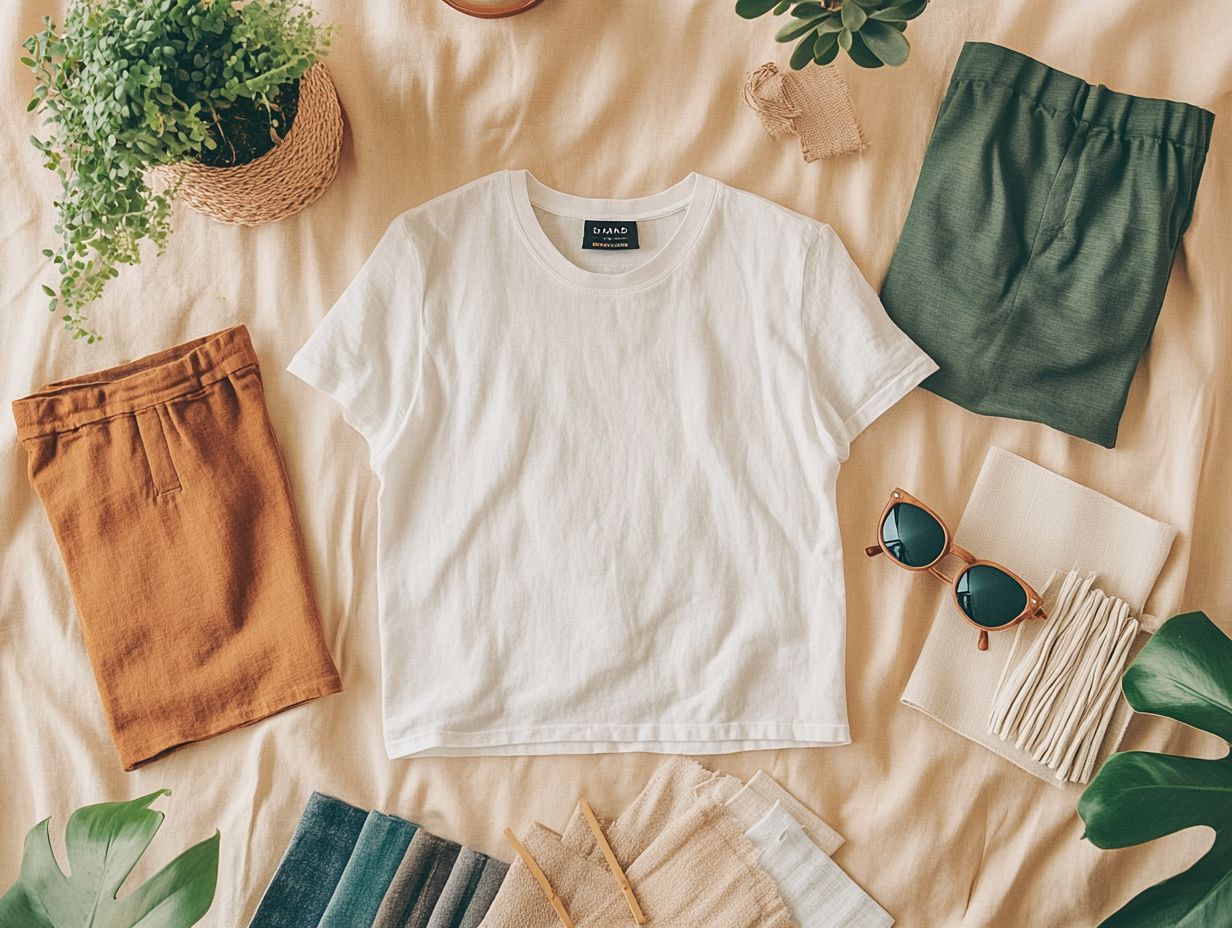
- Reduced environmental footprint
- Commitment to ethical production
- Enhanced quality using materials like organic cotton and fair trade fabrics
By opting for these eco-friendly textiles, you contribute to greater durability in your garments. This means you can enjoy longer wear and less frequent replacements.
Sustainable fabrics are often made from healthier materials that are kinder to your skin. They steer clear of harmful chemicals typically found in conventional manufacturing.
This thoughtful approach creates a safer environment for you as a consumer. It also has a positive effect on garment workers, ensuring they are treated fairly and work in humane conditions.
In doing so, you actively participate in the promotion of sustainability and ethical fashion.
Types of Sustainable Fabrics
Sustainable fabrics can be divided into two primary categories: natural fabrics and synthetic fabrics. Natural fabrics include organic cotton, linen, and hemp. Synthetic fabrics often incorporate recycled materials.
This approach not only reduces environmental impact but also ensures that quality remains uncompromised.
Natural Fabrics
Natural fabrics like organic cotton, hemp, and linen are exemplary choices for those invested in sustainable fashion. They break down naturally and have a reduced environmental impact during production.
These materials offer a positive contribution to the planet and provide exceptional comfort and durability. For instance, organic cotton feels soft against your skin and is breathable perfect for warm climates.
Hemp is remarkably strong and resistant to mold, ensuring its longevity even in humid conditions. Linen is celebrated for its moisture-wicking abilities, keeping you cool and dry on hot days.
Together, these fabrics cater to various preferences and climates, empowering you to make informed choices that beautifully blend style with sustainability.
Synthetic Fabrics
Synthetic fabrics crafted from recycled materials present an eco-friendly alternative to traditional textiles while delivering durability and versatility.
Materials like polyester and nylon are gaining traction in the sustainable fashion arena due to their resilience against wear and tear. This makes them perfect for activewear and outdoor gear.
However, the production of synthetic fabrics comes with challenges. Concerns about microplastics infiltrating waterways and the energy-intensive manufacturing processes prompt important questions about what a sustainable wardrobe looks like and their long-term sustainability.
Brands are actively working to tackle these issues by exploring innovations like bio-based nylons and implementing recycling programs aimed at minimizing waste. While synthetic fabrics offer a promising path toward fashion sustainability, it’s crucial to maintain a balanced perspective that weighs their benefits against potential environmental impacts. For more insights, check out this guide to eco-friendly choices.
How to Incorporate Sustainable Fabrics in Your Capsule Wardrobe
Incorporating sustainable fabrics into your capsule wardrobe requires thoughtful planning and a commitment to conscious shopping.
Focus on quality brands. They should prioritize ethical production and eco-friendly materials, ensuring that each piece aligns with your values and contributes to a more sustainable future.
Tips for Shopping and Styling
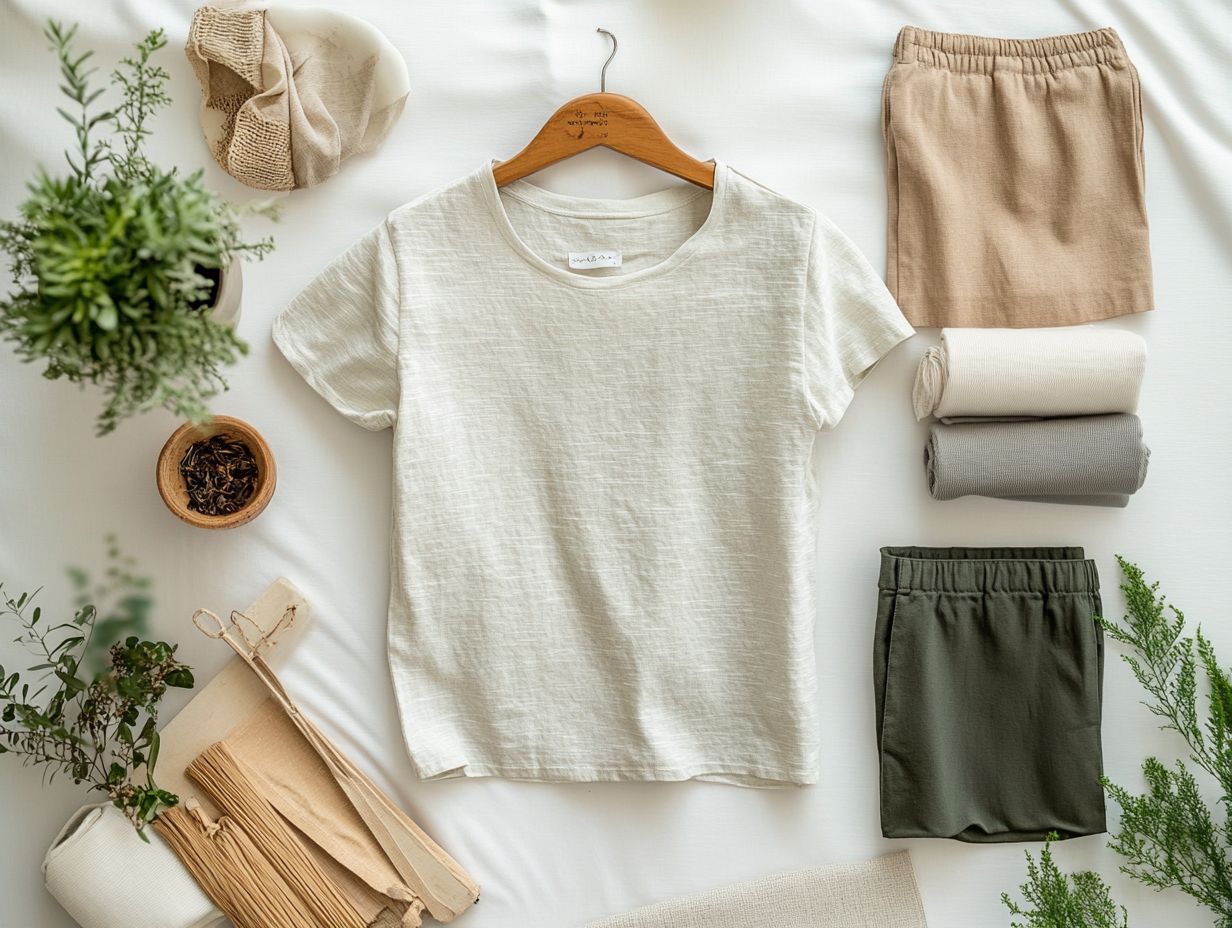
When you’re seeking sustainable fabrics, prioritize versatility and timeless pieces that easily integrate into your wardrobe. Choose brands that resonate with your ethical fashion values.
Consider eco-friendly materials like organic cotton, Tencel, linen, and hemp. These fabrics provide comfort and help minimize your carbon footprint. For a deeper understanding of fabric options, check out the best fabrics for a capsule wardrobe. Familiarize yourself with garment labeling and look for certifications like GOTS, OEKO-TEX, and other standards that promote sustainable practices.
To elevate your simple style, opt for a neutral color palette. This makes mixing and matching easy, which is essential for a capsule wardrobe. Incorporate versatile accessories, such as a statement belt or a chic scarf, to enhance your outfits while maintaining a streamlined look.
Your goal is to create a wardrobe that s stylish and good for the planet!
Brands and Stores that Offer Sustainable Fabrics
Many brands and stores, including Tonl and Neu Nomads, specialize in sustainable fabrics, offering a variety of ethical fashion options. Each choice supports eco-friendly practices.
Options for Every Budget
Sustainable fashion is within your reach, with options from budget-friendly brands to luxurious ethical retailers. You can curate a wardrobe that aligns with your values without compromise.
Many brands now cater to different budgets, providing everything from chic, affordable essentials to exquisite, handcrafted pieces. As a savvy shopper, you’ll find that many sustainable labels prioritize transparency, sharing insights about their supply chains and materials, including the best fabrics for minimalist wardrobe essentials.
Thrift shopping and second-hand purchases can significantly reduce costs while championing sustainability. Start exploring thrift stores today! A unique wardrobe awaits you, and each purchase supports sustainability.
Frequently Asked Questions
What are sustainable fabrics?
Sustainable fabrics are materials sourced and produced ethically, with minimal environmental impact. Including them in your capsule wardrobe helps reduce your carbon footprint and supports ethical fashion practices.
What are some examples of sustainable fabrics that I can incorporate into my capsule wardrobe?
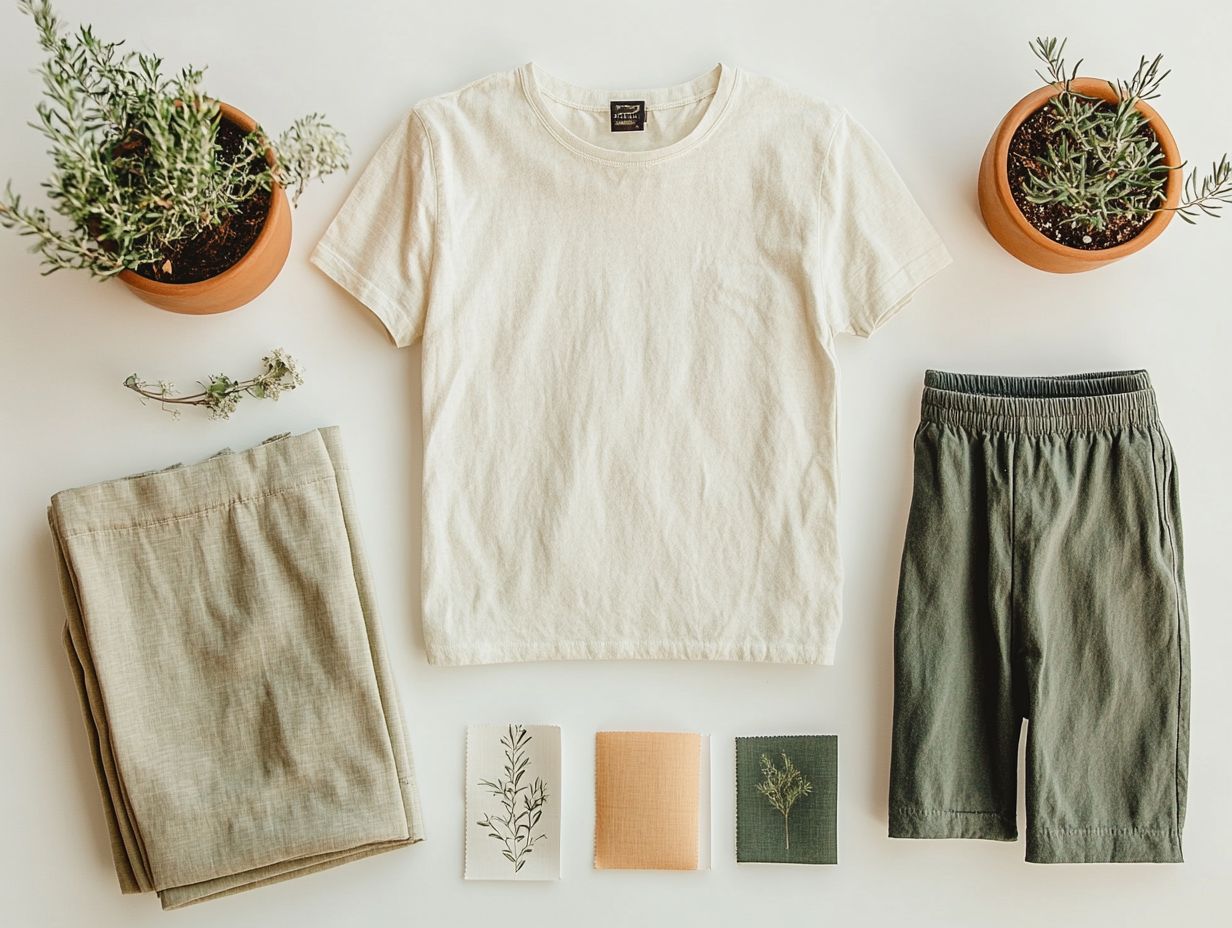
Some popular sustainable fabrics include organic cotton, linen, Tencel, bamboo, and recycled materials like polyester and nylon. These fabrics are natural, biodegradable, and produced in eco-friendly ways.
Are sustainable fabrics more expensive than traditional materials?
While sustainable fabrics may have a slightly higher price point, they are often more durable and last longer than traditional materials. In the long run, investing in quality sustainable pieces can actually save you money.
Ready to upgrade your wardrobe? Start incorporating sustainable options today!
How do I know if a fabric is truly sustainable?
Look for certifications. These are labels that show a fabric meets eco-friendly standards, like the Global Organic Textile Standard (GOTS) or the Better Cotton Initiative (BCI). They ensure the fabric is good for the environment and people.
Can I find sustainable fabrics in a variety of styles and designs?
Absolutely! Sustainable fabrics come in various styles, from casual basics to formal wear. You ll find them in trendy high-end labels and budget-friendly brands alike!
What are the benefits of having a capsule wardrobe made of sustainable fabrics?
A capsule wardrobe reduces your environmental impact. It promotes conscious consumption and helps you support ethical practices in the fashion industry.
